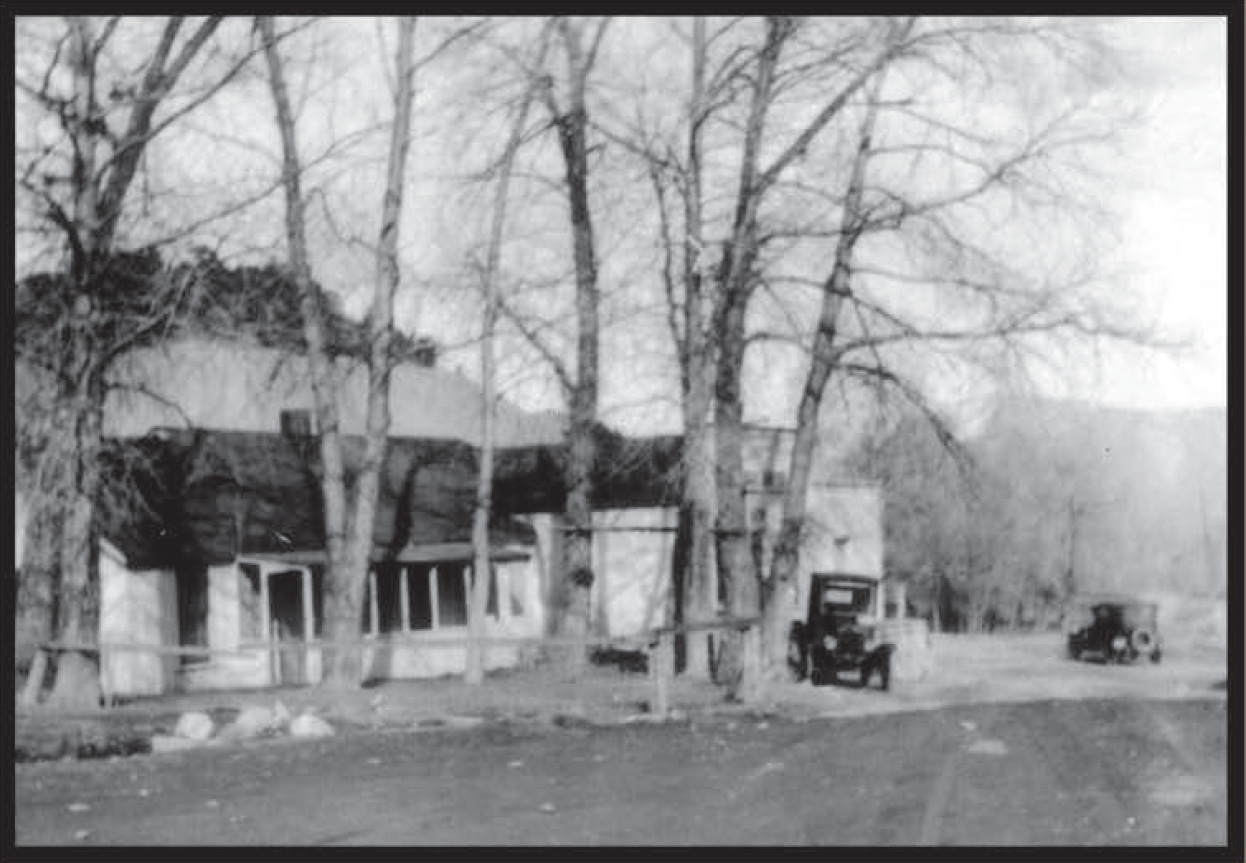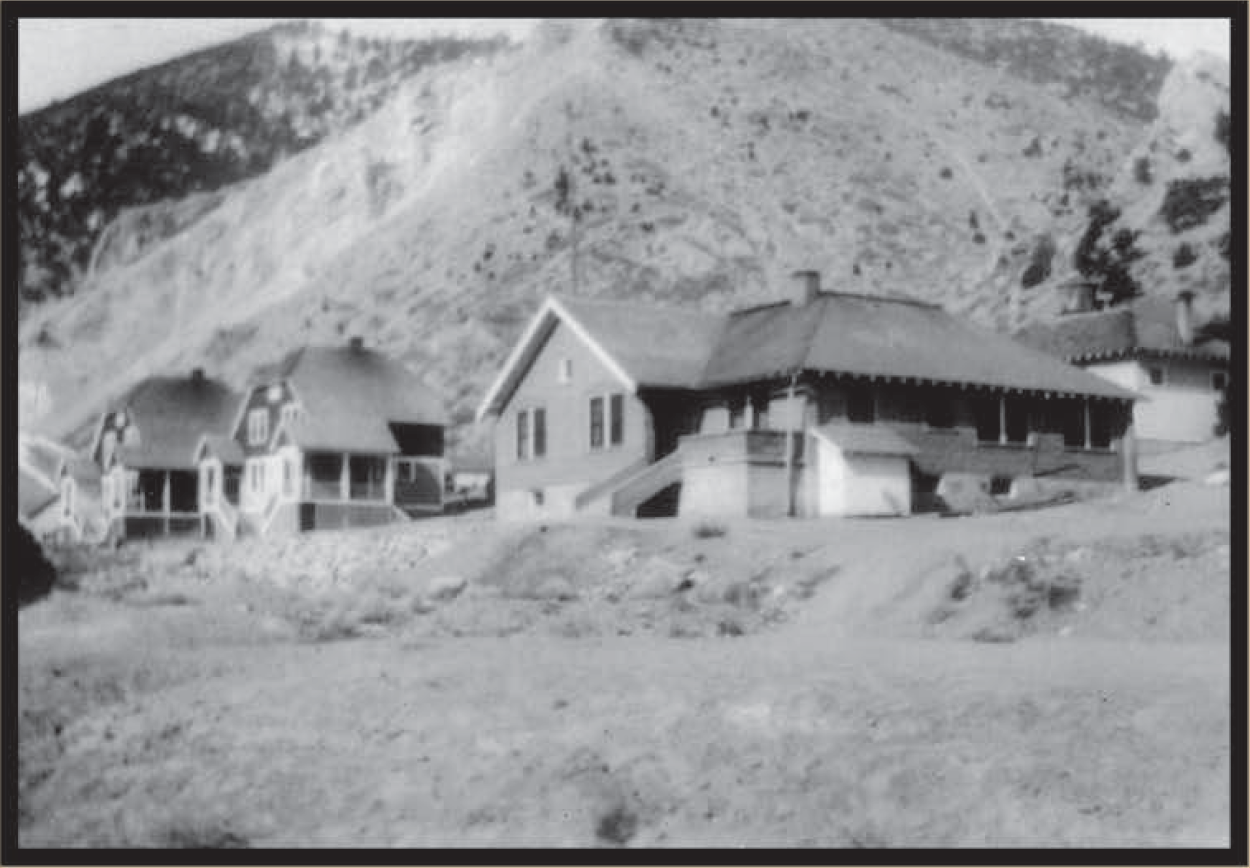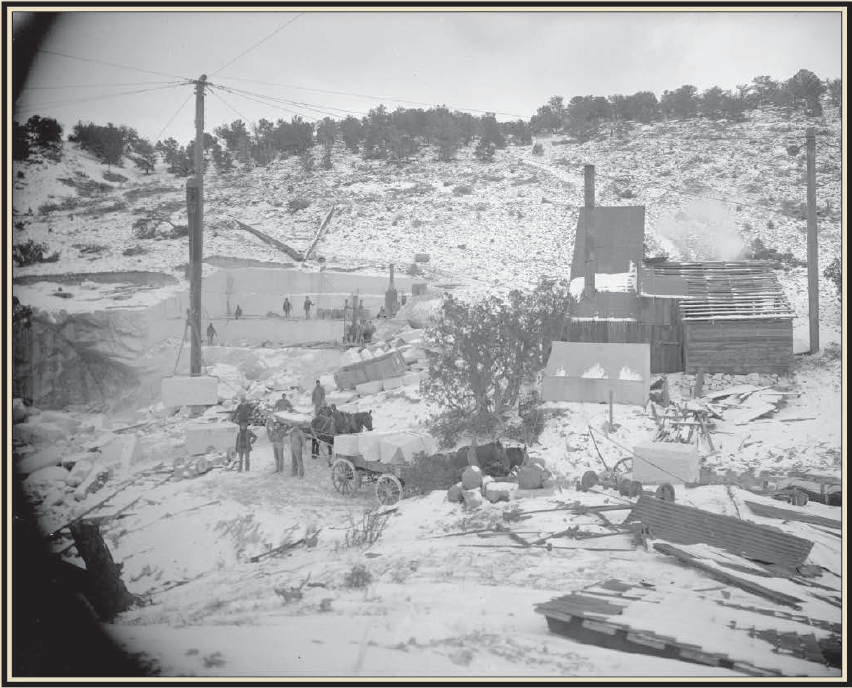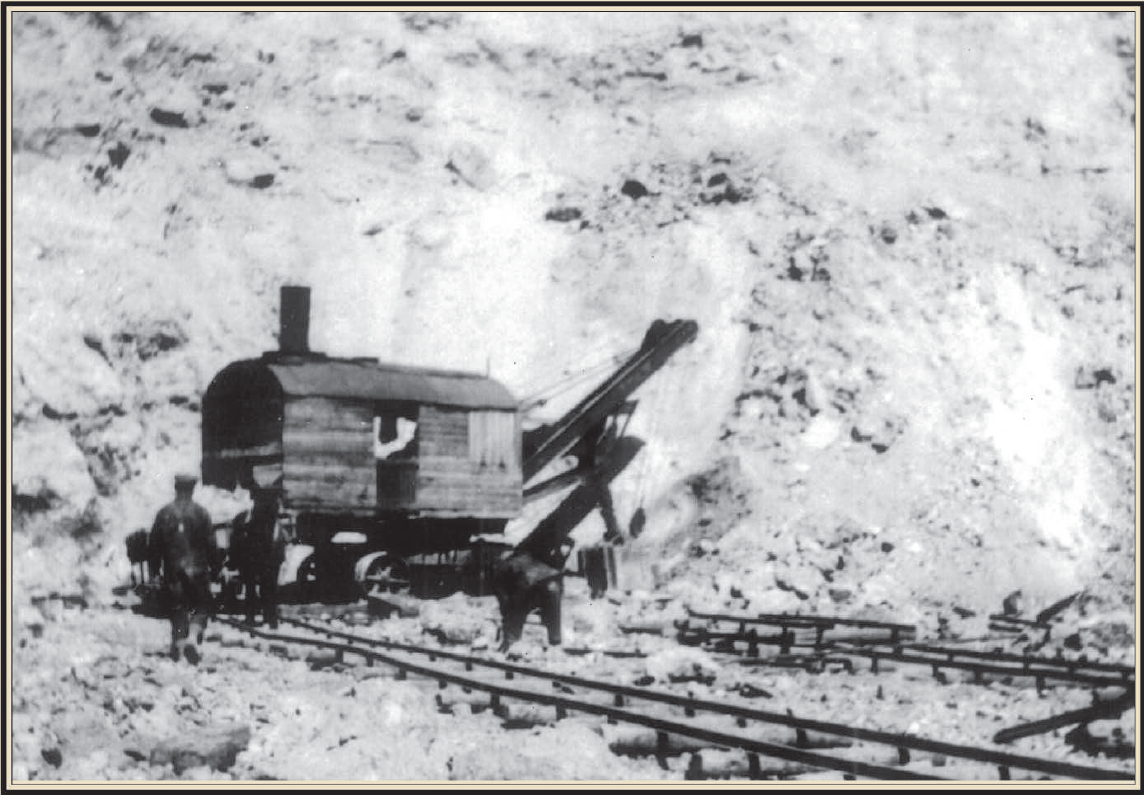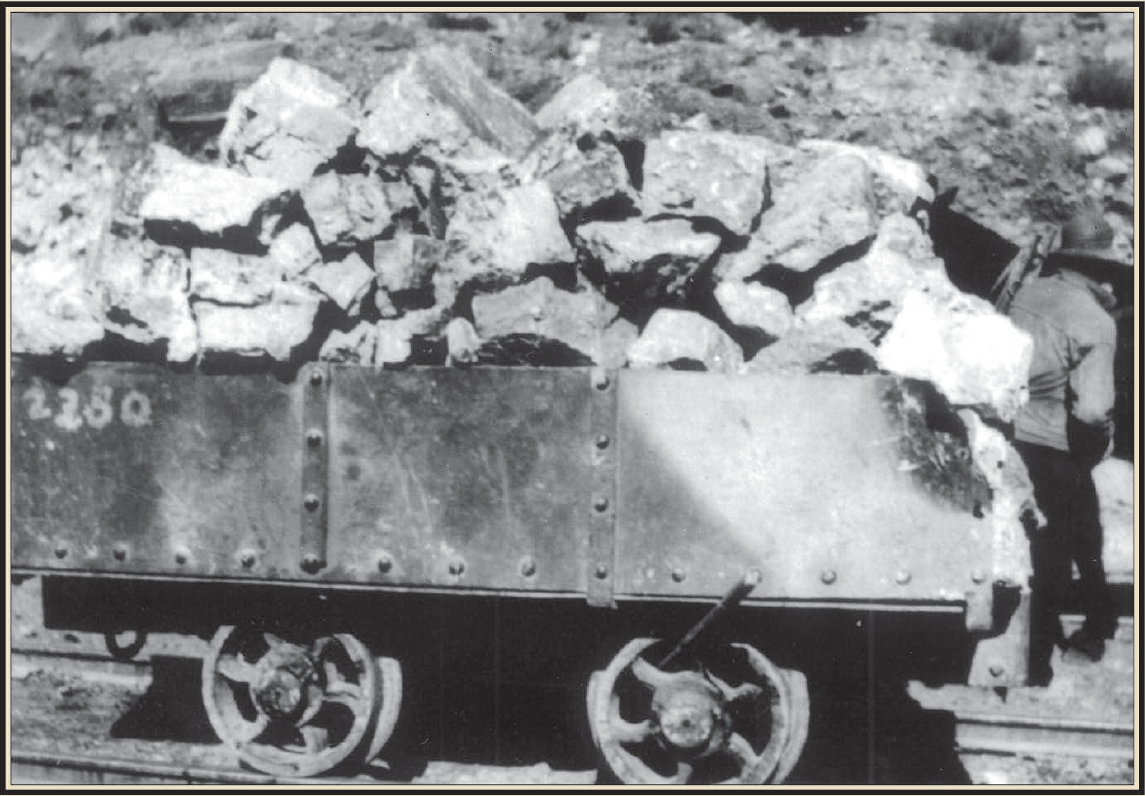Pathway into History
Quarrying Adds to Local Economy
While some miners were searching for a fortune in gold and silver,
the most important minerals in this area were limestone, rhyolite, and travertine. Limestone provided lime for cement and plaster. It also was used in processing sugar beets and in blast furnaces making iron. Beautiful travertine and rhyolite stones were used in building.
Calcite—A Limestone Town
Looking up toward the base of Hunt’s Peak today, it is hard to imagine that a town of two hundred people thrived three miles up Howard Creek from present U.S. Highway 50. Along a railroad branch built from Howard, the town of Calcite was limestone quarrying headquarters for Colorado Fuel and Iron Corporation of Pueblo. The 1900s town consisted of a school, post office, boarding house, club house, company store and homes for miners and superintendents. Between 1903 and 1929, immigrants from Italy, Holland, Scotland, Mexico and China, working for wages of ten to fifteen cents per ton, quarried several million tons of ore valued at 50 cents a ton.
Eventually, operations closed at Calcite and moved to Monarch where a higher grad limestone was available. In 1930, all the buildings in Calcite were sold and salvaged for material or moved. The railroad materials were removed in 1936. Today, all that remains of Calcite are some foundations and the memories of several Howard residents who once lived there.
The Calcite Store
sold supplies to the workers. The quarry camp was reached by road up Howard Creek Mail was delivered daily from Howard.
Buildings on the left
are duplex homes for workers and their families. The schoolhouse is located on the right, the clubhouse is the large building in the center. The clubhouse held a small movie theater and supplied hot showers for community use. A gasoline generator provided the electricity.
Photo courtesy of the Wayne Leroy family, 1928
Click the image to the right for a full-sized version
More than Limestone
Limestone was not the only mineral of importance in the valley. Rhyolite deposits led Denver builders to develop the Kerr Stone Company quarry in 1900. The beautiful stone, used for ornamental purposes such as window lintels and pillars, was cut to size by a unique sawing method. The large pit in the quarry still bears saw marks in its walls. Rhyolite from at the Kerr Quarry was used in building the old Pueblo Library.
In the late 1920s and early 1930s, travertine was quarried at Wellsville. Its quality compared favorably to Italian stones. In an open pit operation, the deposit was opened by cutting a horizontal bench at the top of the mountain then quarrying the travertine into blocks. When first quarried, travertine is soft enough to be readily worked; upon exposure it hardens. Travertine decorates the inside of the Denver City and County Building.
Small prospect holes still dot the hills on either side of the Arkansas River canyon. They are reminders of the hopes of the hardy miners who traveled this road seeking pay dirt among the minerals of this region.
Wagons loaded with rhyolite
are ready to move down Kerr Gulch from the Kerr Stone Quarry to waiting railroad cars at Vallie circa 1900.
Denver Public Library, Wester History Collection, photo X-61332, circa 1900
Click the image to the right for a full-sized version
Colorado Travertine Company’s
quarry operations near Wellsville prepare a large block of travertine for transport on a wagon to the railroad circa 1920. Only rough blocks were shipped from the quarry.
Royal Gorge Regional Museum and History Center photo, circa 1920
Click the image to the right for a full-sized version
The Limestone Quarrying Process
Town of Calcite looking east toward the Arkansas River. Railroad tracks lead up to the tipple where ore was loaded into railroad cars. Workers homes are shown in the foreground where two families shared one roof.
Photo courtesy of the Wayne Leroy family, 1928
After the solid deposits were blasted into small, manageable chunks, mechanical shovels worked the limestone quarry in Calcite in 1928.
Photo courtesy of the Wayne Leroy family, 1928
Ore cars moved the limestone from the quarry to each railroad loading site. A sturdy pole served as a brake for the car.
